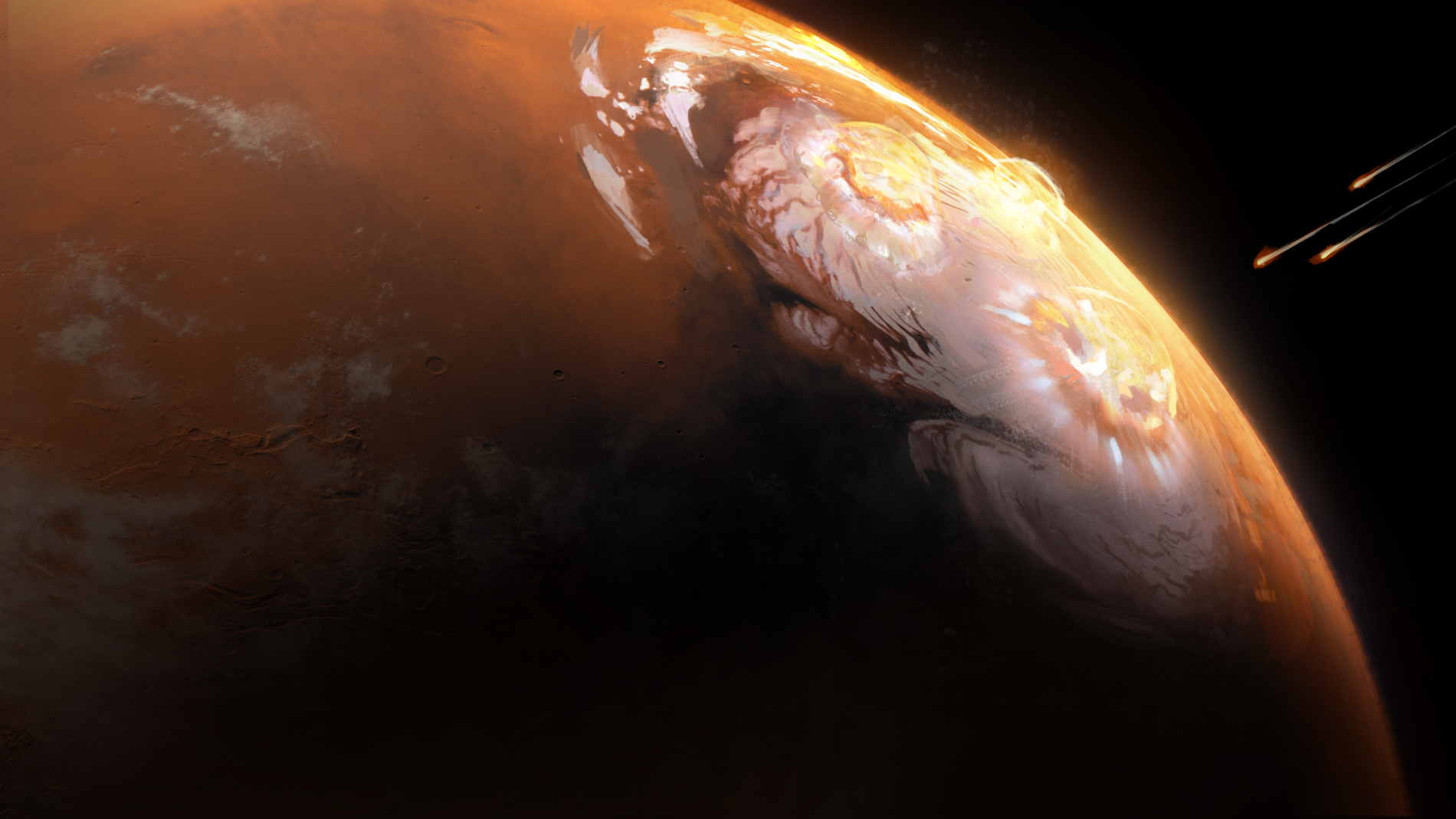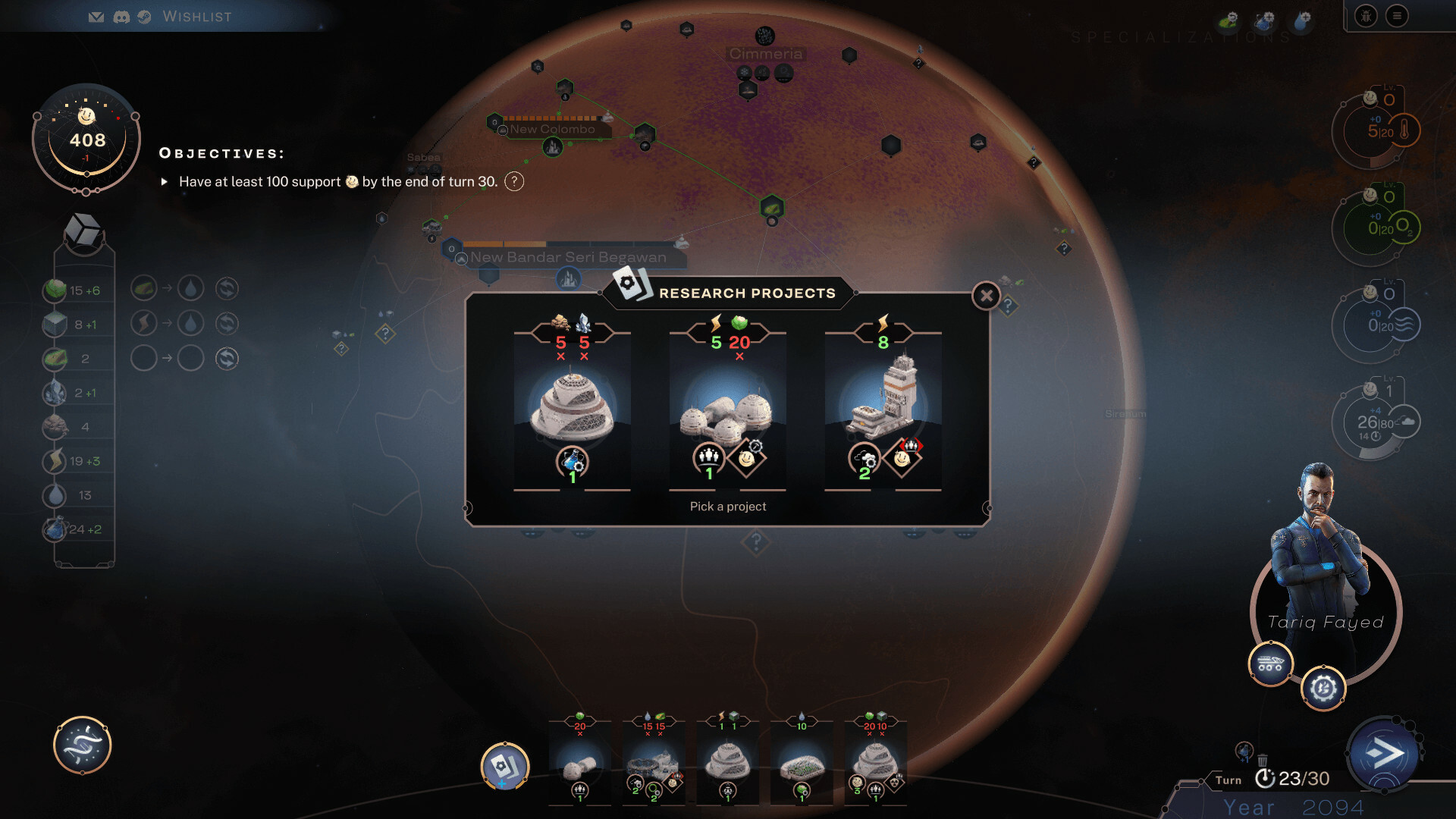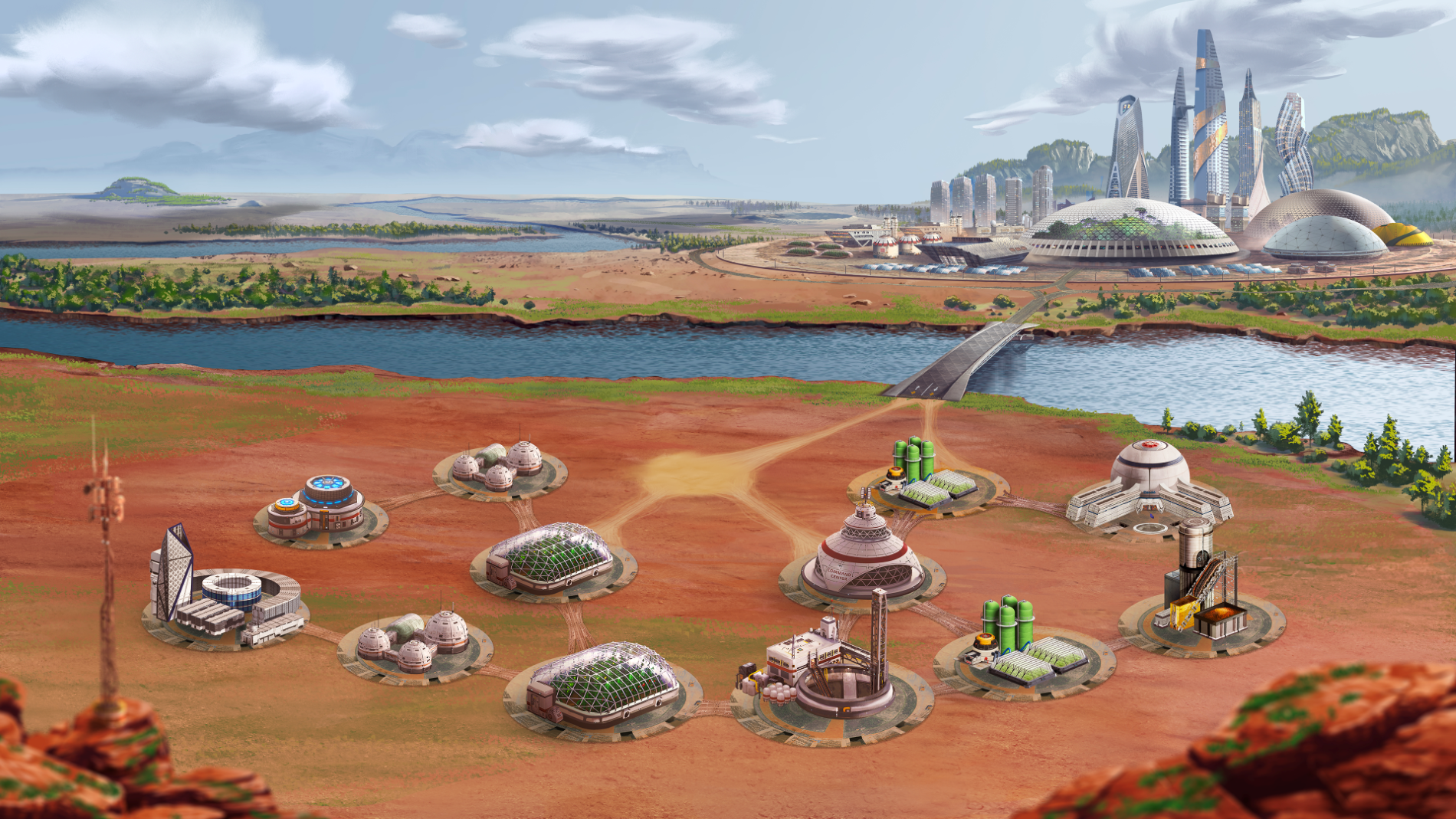November 2021
Prologue release, content suggestions and semi-randomness
Dear Terraformers,
With the release of the prologue, It’s been some time since we wrote our previous devlog. And in this time, the project has moved forward a lot, so let’s dive into it together!
Prologue release
On October 23rd, we released the free prologue for Terraformers named “Terraformers: First steps on Mars”. Here is a link to its Steam page or Gog if you didn’t already see it. We are super proud that the reviews have been “Very Positive” overall, it is very motivating for us and also helps a lot in terms of visibility. So thank you to everyone who left feedback.
We are releasing a new prologue update on wednesday 8 of december with some fixes, polish and most importantly we are adding French, Spanish and Russian translations so that more of you can play!

One of the best score we’ve seen! Congrats Klipp2.
Content suggestions
As you might have seen, we’ve also worked with our publisher on a new trailer As we’re approaching the final stage of development, most features are designed and we’re shifting our focus towards designing more content. We have a lot of ideas for cool terraforming projects, events, and locations ourselves, but we also want to include the community on this aspect. Therefore we’ve opened a new channel on our Discord called “suggest-content”, where you can share your own ideas! Maybe you’ve read an interesting article on how we can create construction material from the Regolith on Mars, or saw a documentary about how housing can be done efficiently in those hostile environments. Or maybe a Kurzgesagt video on how to kickstart the terraforming process (looking at you: “nuke videos”..). In any way, come and discuss your idea on our Discord, and who knows, we might implement it in the game.

Nuking the pole could kickstart a global greenhouse warming effect. But at what cost?
Semi-randomness in Terraformers
As we’ve received some questions about how randomness works in Terraformers, I (Jasper, the game designer) thought it would be nice to write a piece about why we use it and how we use it.
The main reason for adding any form of randomness to a game is to make each playthrough really unique, by providing unique challenges every time you start a new game. This has the effect that there is no clear winning strategy in every game, but that you have to adapt to whatever the game gives you. It promotes a flexible playstyle. It also makes sure that each time you play, you’re getting better at the game in general, and not just solving a specific puzzle.

Semi random project proposition.
However, randomness always brings the risk of letting you feel frustrated, if it doesn’t give you the things you need or were hoping for. In Terraformers, this can happen if you don’t get the project suggested that would be a good combination with your other projects. The difficult thing is that while this aspect can be frustrating, it also brings fun and excitement when you do get the right projects that work well together. So to some degree, this frustration will always be an inherent aspect of the game and something that we can’t completely “solve”. Having said that, we do have systems and design principles in place to limit this frustration:
- Although the proposed projects might seem fully random, they are not. They are drawn from different “decks” which are categorized by their output (food, power, terraforming etc.). Each project is picked from a different deck, until all decks have provided 1 project, and then this cycle repeats. In this way, you will not suddenly get 3 food buildings proposed, and it should never take more than 2-3 turns until you get a food building proposed again. Some decks include multiple project types, for example the “Population deck” includes both human population and robots. So it can happen that you don’t get a human population presented in a few rounds if it proposes robots, but at least projects also fulfill the need for expansion. Also, we make a distinction between early and late game projects when determining what projects are available in these decks in order to provide projects which are relevant to the current game stage. We are still balancing the amount of decks and which decks contain what, and might add more limitations to provide a more balanced game experience.
- We use “input randomness” and try to stay away from “output randomness”. Output randomness takes place after you do something, usually to determine if it is a success or a failure while “input randomness” proposes a random set of options, but then you have full knowledge of what the outcomes of these options will be, this usually feels much less frustrating. Some examples of output randomness that we stay away from would be, that if a leader travels far, they have a 20% chance to get injured. Or that when you do a risky terraforming project, there is a 10% chance that it fails. The problem with this type of randomness is that it does not give you much agency and does not (in my opinion) provide an interesting choice. It’s more like a risk-analysis and a gamble. Instead, the outcome of actions in Terraformers is usually fully determined (exploration and projects always succeed). Instead, we use “input randomness”, which is randomness that takes place first, and then gives you the choice how to respond to it. For example the project proposal proposes to you 3 semi-random projects, and then it is up to you to choose the best one of them.
- For events, we have a system in place that balances positive and negative events. If more bad things happen to you (damage, expectation rise), the game will “remember” this and will provide you with more positive events later. The fact that events early in the game have more impact than later in the game is also taken into consideration when calculating this to provide a balanced experience throughout the game. So if something bad happens, don’t lose hope, the game will help you get back on track later!
Finally, randomness can help to keep the complexity of the game low. For example our project proposal system replaces a traditional technology tree, often used on other games. In those games, if you want to play optimally, you often need to define your path through the technology tree long in advance, which can lead to a very complex early game, and also to an optimal strategy that you follow in each different game. Something which 4X games like Civilization suffer from in the long term. By including randomness here, we solve these 2 issues, but increase the potential for frustration.
In the end it’s also a matter of personal preference.
In a future devlog we’ll share more about the map generation process (which we are changing), as this also includes procedural randomness.
That was all for this month! We wish you the best for this holiday season. Here is a sneak peak into a terraformed city artwork, something we’ve been working on as well:

Terraf's dev team